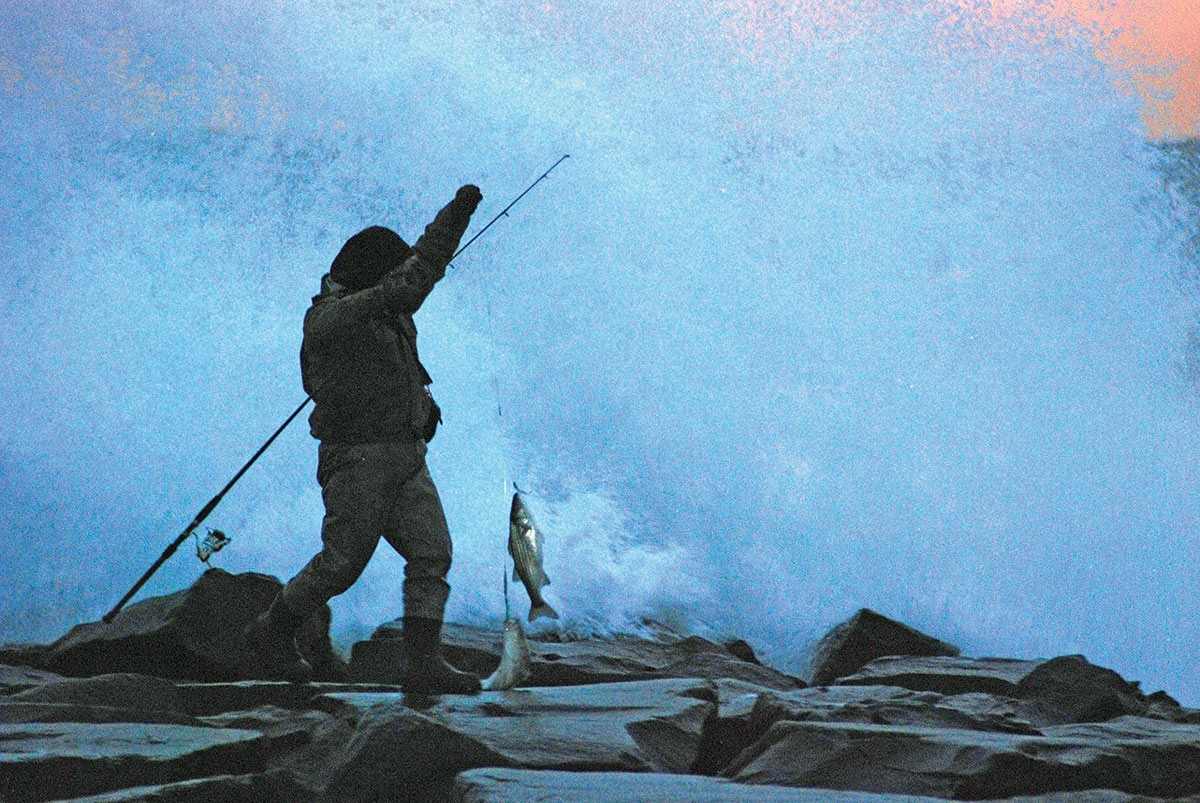
Sometimes faking it is the better all-around option.
If you ask most saltwater anglers what catches more fish live bait or artificials I think many will answer live bait. While this may be the case, there are times when artificials can be more productive or beneficial to use. They definitely have their place, and you should build your arsenal so you capitalize on these opportunities when they present themselves. Let’s take a quick look at some of these.
1 Time Is of the Essence
Artificial lures make it easier to catch fish when time is limited. Trying to net bait the morning of a trip or stopping in a tackle shop to pick it up will take up precious time that could be spent actually fishing. If you’re after that first light bite then anything other than getting out on the water could result in missing it. Sometimes you might miss the bite only by the time it took you to get the bait. Anglers that are short on time and want to wet a line whenever they are near water or before work, just taking a short lunch break, or when traveling will benefit from a pre-rigged outfit ready to cast.
2 Big Baits, Big Fish
While big fish tend to surprise anglers by striking on baits both big and small, bigger baits can certainly help entice trophy fish to attack. We have all heard the old adage “the bigger the bait the bigger the fish,” but purchasing bigger live baits can be next to impossible. And if they are available they can be very expensive. Larger artificial baits can solve this problem and help mitigate costs. The large artificials can be used effectively many times over.
3 A Game of Action
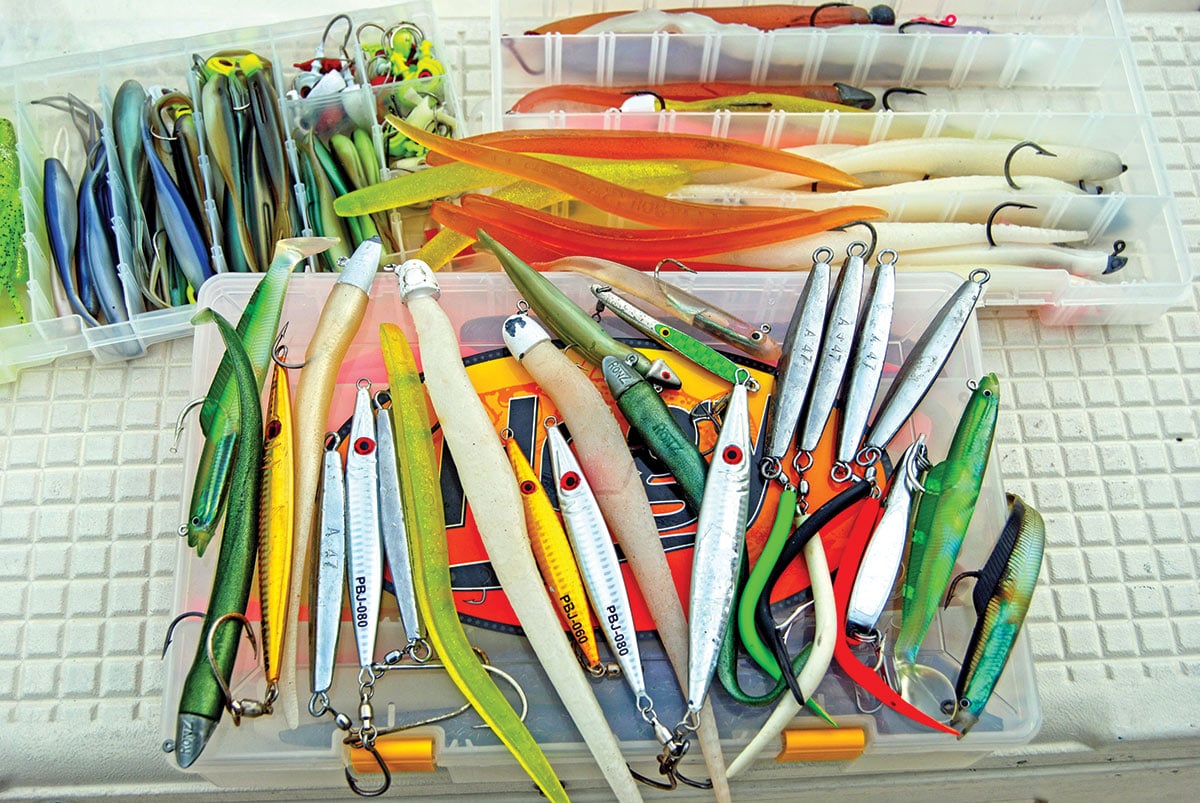
Control is the key word here. Artificials allow the angler to make the artificial do what he wants, whether it’s jigging, popping, sinking, diving, or skipping, on fast or slow retrieves, even when mimicking an injured bait with an erratic motion; with artificials, the angler is in complete control as one can give the lure its action. Live baits don’t offer as much control over how the bait behaves. Trying to move a live bait or add action to it may make it present itself as unnatural. Also if the live bait dies and drops to the bottom or goes with the current anglers lose the attention-grabbing action that elicits bites.
Keep in mind that while fish will eat a live bait at dinner time, artificials can be used to trigger territorial strikes or aggression strikes during non-feeding times. A big gator bluefish is known to do this repeatedly. Artificial lures also give the angler a bit of extra pride in knowing their rod movements helped to trigger each strike. At times getting a fish to strike out at a lure is a challenge and the reward is very personal.
4 Casting Advantages
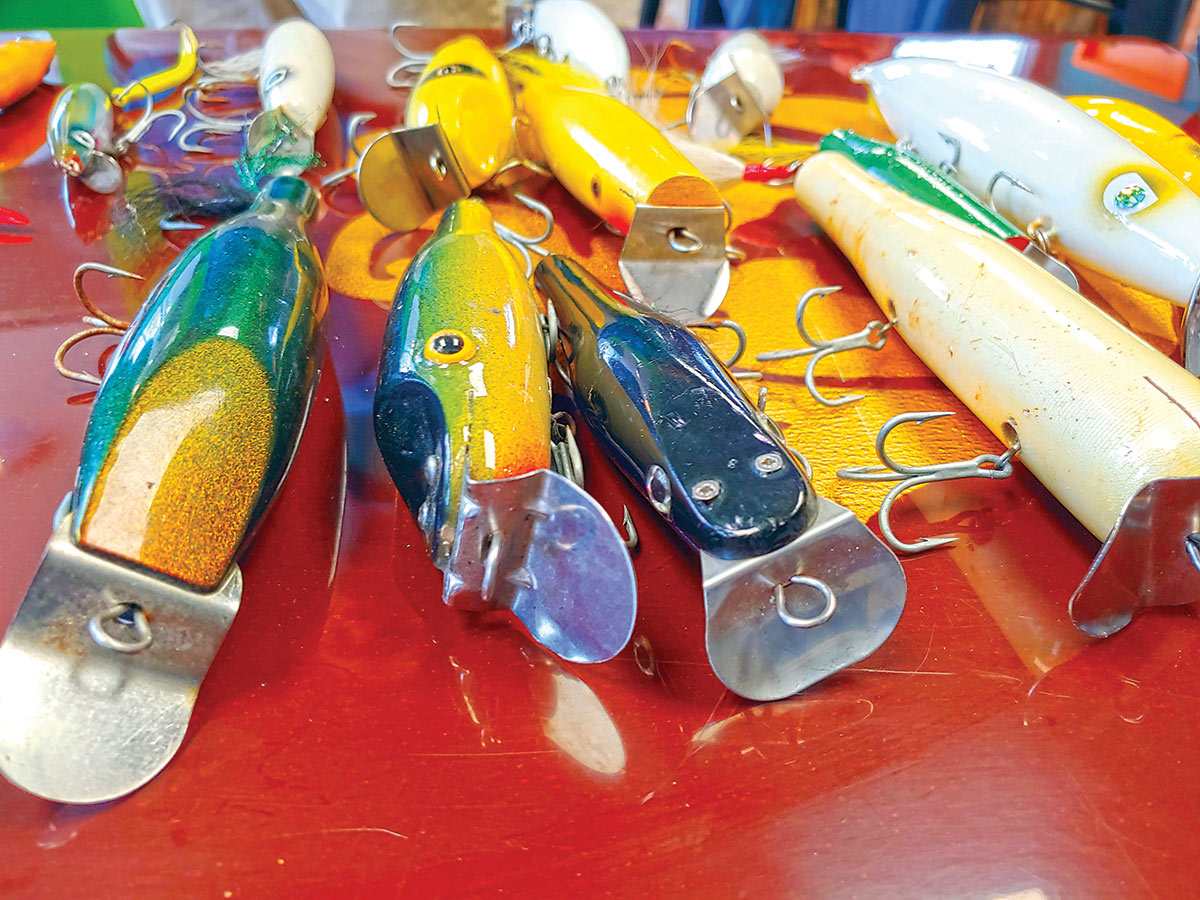
custom plug builder Dave Petry, while adding “different lip designs on plugs produce their own signature action.”
Putting the angler in control of the presentation can lead to some big advantages, especially when it comes to distance or pinpoint casting. Trying to achieve distance when casting a live bait can be difficult and sometimes next to impossible, especially when casting bigger baits. This is particularly true when trying reach a pod of breaking fish on the outside of the bar as you’re standing in the surf with a 1-pound bunker on the line. In many instances a cast of near 50 yards is necessary. With weights attached to your leader casted baits tend to helicopter or fly in the wrong direction and as a result don’t go very far. With artificials and braided line on your reel you will get the distance you need. Also since artificials can cast much further than live baits you will be covering much more water when you retrieve back and fish them. The more water you cover the more opportunity you have to catch a fish.
That same lack of control also holds true when trying to make a pinpoint cast with a live bait. Often it is difficult to put the bait exactly where you want it when pinpoint accuracy is necessary. This might mean casting towards a jetty tip from a boat or at or around docks and pilings. Casting an artificial allows you to achieve the accuracy you need to hit or land next to the target.
5 Better Hook Sets
When it comes time to drive the hook home artificial lures allow you to get a much better hook set than live baits. With artificials when the lure is in the fish’s mouth, nine times out of 10 so is the hook; so when you set up on the fish it penetrates deep. With live baits many times the hook has to pull out of the bait first then set in the fish’s mouth. What can result when you go to set the hook is that you just end up pulling the bait out of the fish’s mouth. Also with artificial lures especially when fishing swimming plugs with trebles the fish hook themselves when they bite the lure.
6 Using Lighter Tackle
If you enjoy catching fish on light tackle then fishing with artificial lures will give you an opportunity to do it. Many times casting big baits requires long rods and medium heavy to heavy power rods. With artificials that mimic these same baits one can drop down in power rating and still get the job done. Lighter tackle will also provide more feel and more excitement when fighting a fish.
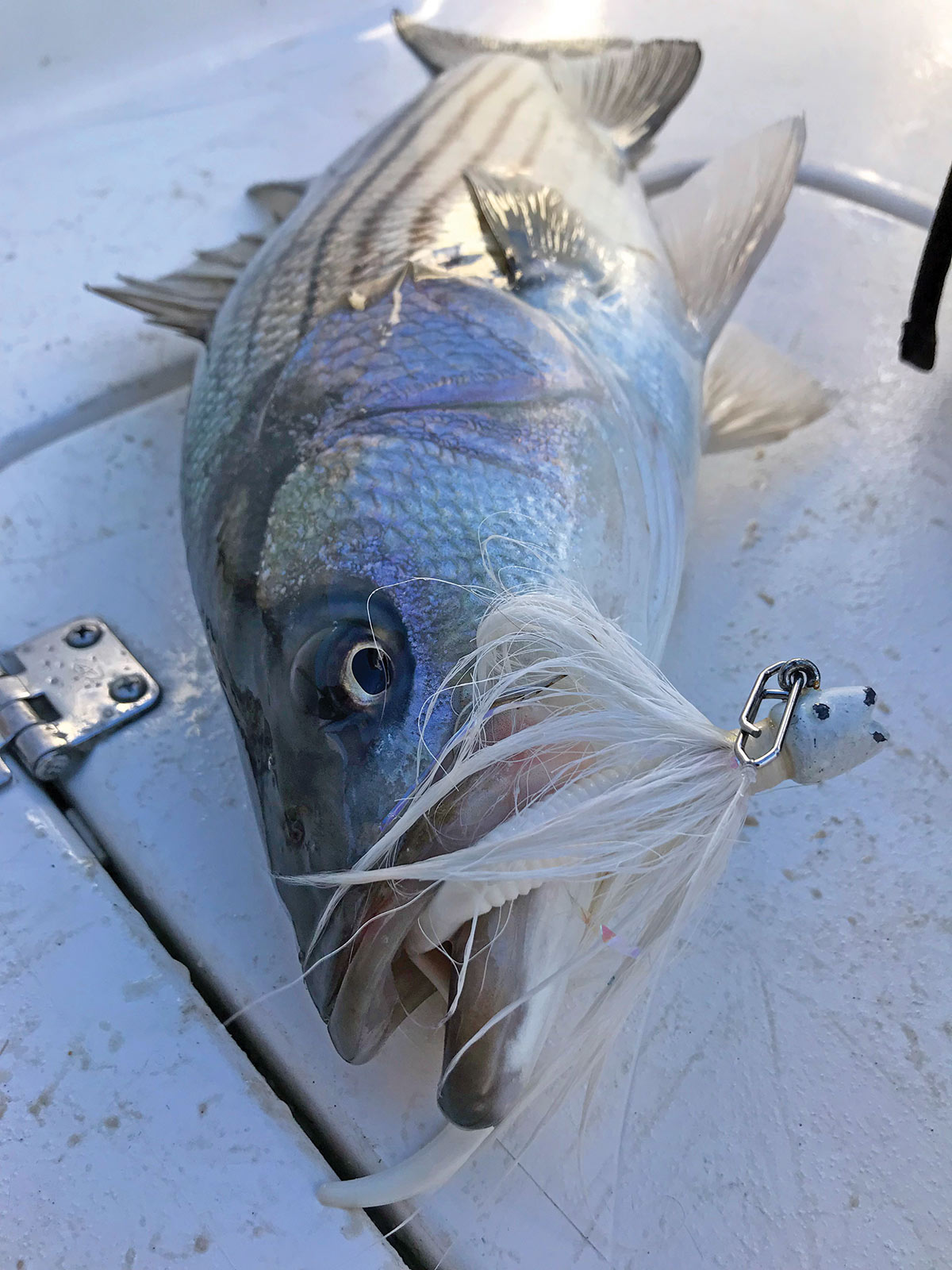
7 Casting at Rough Surf
Trying to work a live bait in rough surf is usually ineffective as the bait just gets tossed and washed around and quickly ends up back on the beach. As any hardcore surfcaster will tell you, a heavy bucktail, jig or tin can be cast out and still be worked effectively under some of the roughest conditions in our Northeast surf.
8 Offshore Success
It is difficult to obtain live baits when heading offshore for bluefin and yellowfin so this fishery has become an artificial game for just about every boat that heads out there. Artificial lures have contributed to the success of the offshore angler probably more so than any type of inshore species that you might target. Whether you are trolling, casting or jigging there is a multitude of artificial lures you can use to be highly successful.
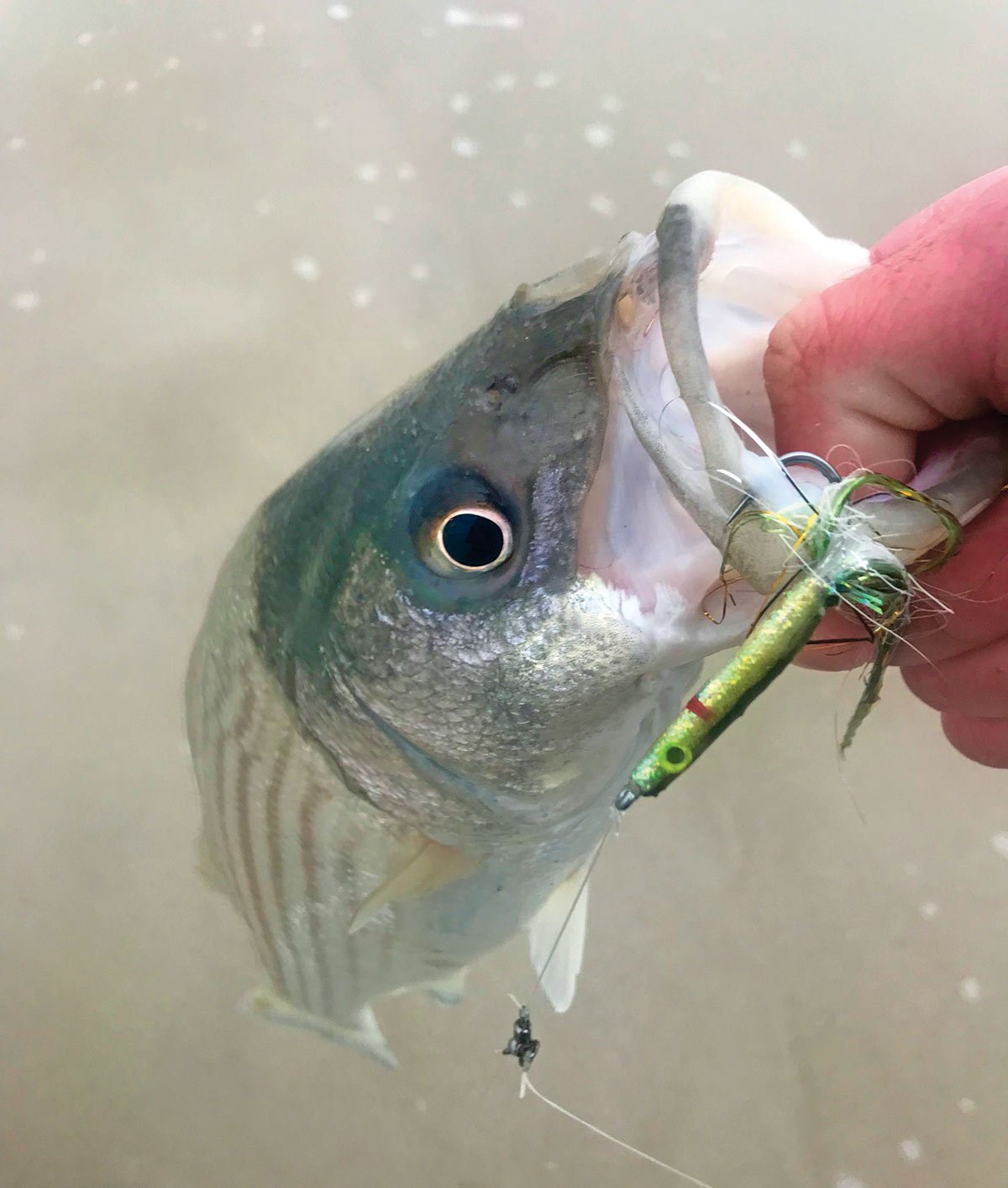
9 Not Necessarily Needed
While live baits are always enticing and effective at times, they are just not necessary at all times. With the variety of artificials that are on the market today saltwater anglers will have no problem matching the hatch with the lifelike lures currently available. Whether it’s soft or hard baits, plastics or metals, skirts or feathers, one can take advantage of using artificial lures and match every type of bait that swims in the ocean. Picking the right artificial that has the same color, flash, vibration, and profile of the baitfish the target species is feeding on and then to retrieve it correctly certainly encompasses a science and a skill to consistently catch fish.
Once you master the conventional or “spin” presentation, you may even want to think about doing it with the fly next!




